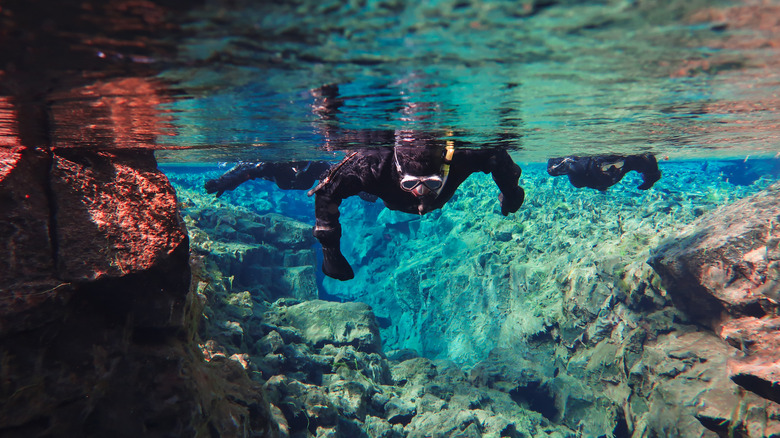Despite its name, Iceland isn’t icy all year round. The Nordic country experiences seasonal changes, just like many other parts of the world, and a visit during summer is much different than a winter getaway. Head to Iceland in the summer and soak up the warmer temperatures and round-the-clock sunshine, or plan a trip in the winter for snowy landscapes and to see the Northern Lights.
Even though Iceland’s climate shifts throughout the year, one thing remains the same no matter the month — the weather is predictably unpredictable. According to Rick Steves, rain, wind, and other inclement weather conditions can strike at any time. The European travel guru wrote on his website that rain should be expected no matter when you plan your trip, though summer tends to offer the best weather for outdoor exploring.
In a separate article, Steves adds that strong winds and freezing temperatures aren’t only a concern during the dead of winter — a cold, knock-you-off-your-feet gale can also swoop in during the summer. Sure, Iceland may not be a tropical paradise, but with some preparation, you can still enjoy all the Land of Fire and Ice offers.
What clothes to pack for Icelandic weather

Dressing appropriately is essential when traveling to any country, but it’s especially crucial in Iceland. Packing only shorts and T-shirts during a summer trip could result in a bad case of windburn or even frostbite — yikes! Avoid a trip to the emergency room by packing for cold weather, even if you’re visiting in July or August when temperatures usually reach their peak for the year.
Rick Steves suggests bringing a waterproof jacket to protect yourself from the rain and the chill in the air. During the winter, a heavy waterproof coat is your best bet, particularly when layered with other warm garments underneath. For the summer, you can usually get away with a lighter, windproof, waterproof raincoat worn over thermals or a cozy sweater.
The travel expert also recommends packing some wintery accessories, regardless of the season you’ll be traveling in. Gloves, thick hats, and scarves can keep you comfy during hikes and other outings. And don’t forget footwear — grippy, waterproof boots are always a smart choice in Iceland. You’re not in flip-flop country now.
Keep a flexible travel itinerary in Iceland

Considering how unpredictable and harsh Iceland’s weather can be, it’s best to approach your trip with an open mind. Rain might keep you from swimming in the Blue Lagoon, while a severe windstorm could halt transportation on the island. Be prepared to modify your plans as the forecast changes.
Thankfully, this typically doesn’t mean you must stay cooped up in your hotel all day. If the weather is chillier than expected, warm your bones in one of the country’s steamy saunas. You’ll find them at the Blue Lagoon, Sky Lagoon, and other facilities around the island.
For miserable rainy days, stay dry indoors at one of Iceland’s museums (try the National Museum of Iceland or the Whales of Iceland exhibition) or restaurants (foodies will find no shortage of options in central Reykjavík). Can’t bear to peel yourself away from Iceland’s stunning nature? Consider embracing the wet conditions and going snorkeling or diving. Silfra is known for the activity, but it can be dangerous, so go with a guide to be safe. And remember to dress accordingly, of course.

